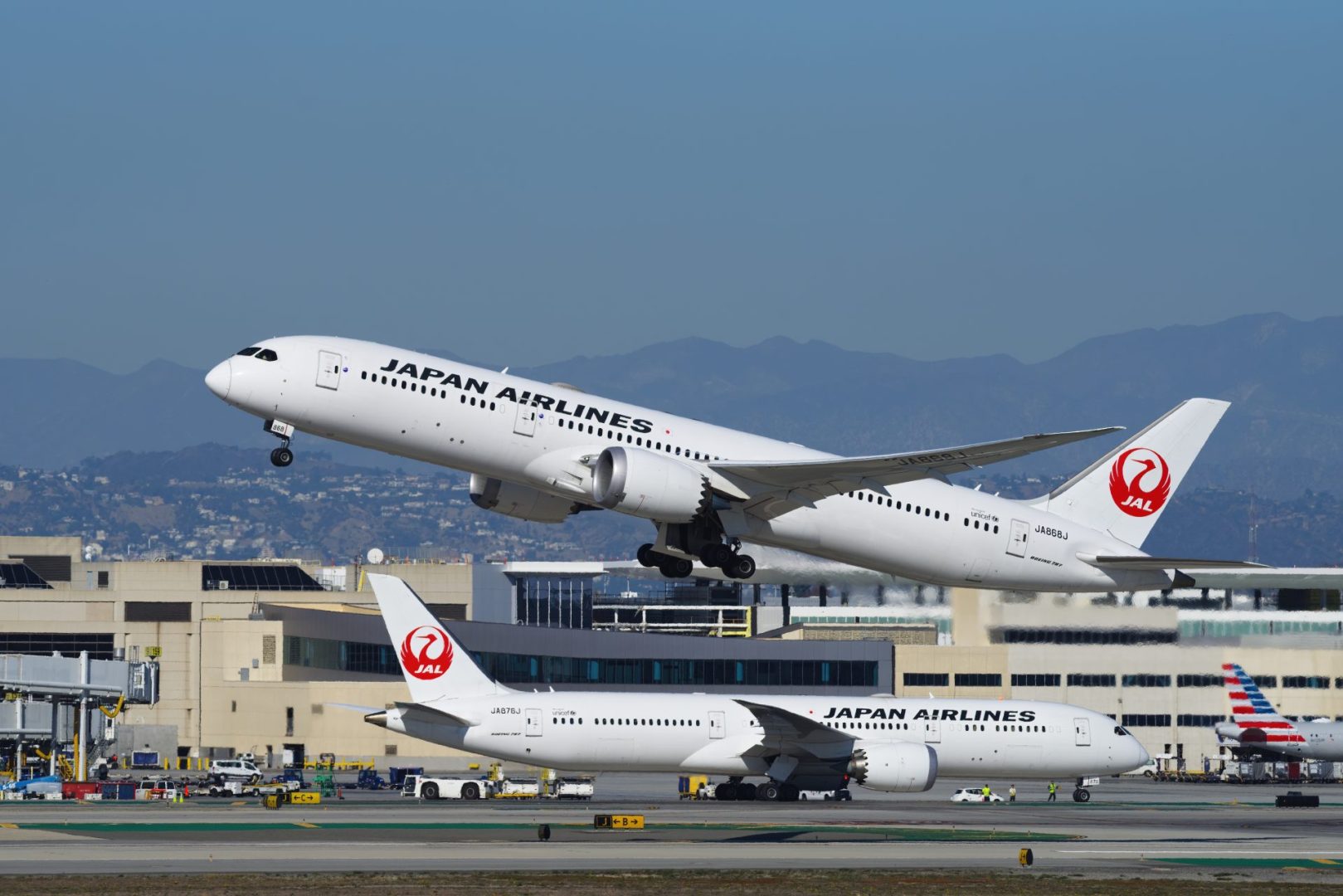A routine international flight transformed into a living nightmare for 191 passengers aboard a Japan Airlines aircraft when a sudden mechanical failure sent their plane plummeting through the sky in a heart-stopping emergency that left travelers convinced they might not survive the journey home.
The harrowing incident unfolded on June 30, 2025, when what began as an ordinary departure from Shanghai Pudong Airport bound for Tokyo Narita quickly escalated into one of the most frightening aviation emergencies in recent memory. Passengers who had settled in for their flight found themselves thrust into a terrifying situation that would test both their nerves and the aircraft’s safety systems.
The dramatic emergency occurred just ten minutes after takeoff, when the aircraft was cruising at approximately 36,000 feet. Without warning, a mysterious mechanical malfunction caused the plane to lose altitude at an alarming rate, dropping more than 25,000 feet in mere minutes before leveling off at just under 10,500 feet, leaving passengers and crew to grapple with the reality of their precarious situation.
The moment terror struck
The first sign that something had gone catastrophically wrong came in the form of a muffled boom that resonated throughout the aircraft cabin. The sound, described by passengers as both startling and ominous, immediately created an atmosphere of unease among travelers who had been peacefully enjoying their flight just moments before.
Within seconds of the mysterious sound, oxygen masks deployed from the overhead compartments, creating a scene of chaos and confusion as passengers struggled to understand what was happening. The sight of the yellow masks dangling before their faces served as a stark reminder of the gravity of their situation, transforming a routine travel day into a fight for survival.
Flight attendants, trained for such emergencies but likely hoping never to face them, sprang into action with urgent instructions for passengers to secure their oxygen masks immediately. The crew’s professionalism shone through despite the terrifying circumstances, as they worked to maintain order and ensure passenger safety while the aircraft continued its alarming descent.
The cabin atmosphere shifted dramatically from the relaxed environment typical of international flights to one of palpable fear and uncertainty. Passengers found themselves confronting the very real possibility that their journey might end in tragedy, a realization that would leave lasting psychological impacts long after the physical danger had passed.
Passengers confront their mortality
As the aircraft continued its rapid descent and the full scope of the emergency became apparent, passengers began to grapple with the terrifying possibility that they might not survive the ordeal. The psychological impact of facing potential death while trapped in an aircraft thousands of feet above the ground created scenes of raw human emotion throughout the cabin.
One passenger, overwhelmed by the gravity of the situation and fearing the worst possible outcome, made the heartbreaking decision to write what they believed might be their final message to loved ones. This farewell note represented not just personal closure but a testament to the very real terror experienced by everyone aboard the stricken aircraft.
The passenger’s note included practical information such as insurance details and banking access codes, demonstrating the methodical way people often respond to crisis situations even while experiencing overwhelming fear. This level of preparation for the worst-case scenario highlighted just how seriously passengers took the threat to their lives during those terrifying minutes.
The emotional toll extended beyond individual passengers to affect the entire cabin environment. Travelers who had been strangers just hours before found themselves united in their shared fear, creating bonds forged in crisis that would likely last long after the flight’s conclusion.
Swift emergency response saves lives
Recognizing the severity of the mechanical failure and the immediate danger to all aboard, the flight crew initiated emergency protocols designed to get the aircraft safely on the ground as quickly as possible. The pilot’s decision-making during these crucial moments would prove instrumental in preventing what could have been a catastrophic tragedy.
Rather than attempting to continue to the original destination of Tokyo Narita, the crew made the critical decision to divert the flight to Kansai International Airport in Osaka. This choice prioritized passenger safety over schedule convenience, demonstrating the aviation industry’s commitment to putting lives above all other considerations during emergency situations.
The successful emergency landing at Kansai International Airport marked the end of the immediate physical danger, but the beginning of a long recovery process for passengers who had endured one of the most frightening experiences of their lives. The skill and professionalism of the flight crew undoubtedly prevented what could have been a much more tragic outcome.
Emergency response teams at Kansai International Airport were prepared for the aircraft’s arrival, ensuring that medical personnel and other support staff were available to assist passengers and crew members who might need immediate attention following their harrowing ordeal.
Investigating the mechanical failure
The aviation industry takes mechanical failures extremely seriously, particularly when they result in emergency situations that endanger passenger lives. The investigation into what caused the aircraft to lose altitude so dramatically will likely involve multiple agencies and extensive analysis of the aircraft’s systems and maintenance records.
Preliminary reports suggest that some form of mechanical malfunction was responsible for the emergency, but determining the exact cause will require detailed examination of the aircraft’s engines, control systems, and other critical components. This investigation process can take months or even years to complete thoroughly.
Japan Airlines has committed to full cooperation with investigators, recognizing that understanding what went wrong is essential for preventing similar incidents in the future. The airline’s transparency during the investigation process will be crucial for maintaining public confidence in air travel safety.
The findings from this investigation could potentially lead to changes in maintenance procedures, safety protocols, or aircraft design features that would benefit the entire aviation industry. Each serious incident provides valuable data that helps improve overall flight safety for millions of passengers worldwide.
Understanding aviation emergency procedures
Modern commercial aircraft are equipped with numerous safety systems designed to protect passengers during emergencies like the one experienced on this Japan Airlines flight. The rapid deployment of oxygen masks, for example, is an automatic response to cabin pressure changes that ensures passengers can continue breathing even at high altitudes.
Flight attendants undergo extensive training to handle emergency situations, including rapid decompression scenarios like the one that occurred during this incident. Their ability to maintain calm and provide clear instructions during crisis situations often makes the difference between panic and orderly emergency response.
Aircraft are designed with multiple redundant systems to ensure that single-point failures don’t result in catastrophic outcomes. Even when mechanical problems occur, pilots have various tools and procedures available to maintain control of the aircraft and execute safe emergency landings.
The aviation industry’s safety record demonstrates that even serious mechanical failures like the one experienced by this Japan Airlines flight rarely result in loss of life when proper procedures are followed and emergency protocols are executed effectively.
Passenger support and compensation
Following the successful emergency landing, Japan Airlines took immediate steps to care for passengers who had endured the traumatic experience. The airline provided overnight accommodations for travelers whose journeys had been disrupted, recognizing that the emotional impact of the incident extended far beyond simple schedule inconvenience.
Compensation packages offered to passengers acknowledged both the delay in their travel plans and the psychological trauma associated with experiencing a serious aviation emergency. These measures represent standard industry practice for situations where passengers experience significant distress due to airline operational issues.
Mental health support services were made available to passengers who felt they needed assistance processing the traumatic experience. The psychological impact of believing one might die in an aircraft emergency can have lasting effects that extend far beyond the immediate incident.
The airline’s response to passenger needs following the emergency demonstrates the industry’s understanding that their responsibility extends beyond simply getting people from point A to point B safely, encompassing the overall passenger experience including crisis management.
Broader implications for air travel safety
This incident serves as a reminder that while commercial aviation remains one of the safest forms of transportation, mechanical failures can still occur with potentially serious consequences. The key to maintaining aviation safety lies in continuous improvement of aircraft design, maintenance procedures, and emergency response protocols.
Passengers can take comfort in knowing that incidents like this one, while terrifying for those involved, are extremely rare in the context of the millions of flights that operate safely every year. The aviation industry’s commitment to learning from each incident helps ensure that safety standards continue to improve over time.
The successful handling of this emergency also demonstrates the value of rigorous flight crew training and the importance of following established emergency procedures. When systems work as designed and crews respond appropriately, even serious mechanical failures can be managed without loss of life.
For future travelers, this incident underscores the importance of paying attention to safety briefings and understanding how to properly use emergency equipment like oxygen masks. While such knowledge hopefully will never be needed, being prepared can make a crucial difference during actual emergencies.
The Japan Airlines emergency flight will undoubtedly be studied extensively by aviation safety experts as they work to understand how similar incidents can be prevented in the future. The lessons learned from this terrifying experience may ultimately help protect countless other passengers from facing similar ordeals, transforming a nightmare into an opportunity for improved aviation safety worldwide.


















